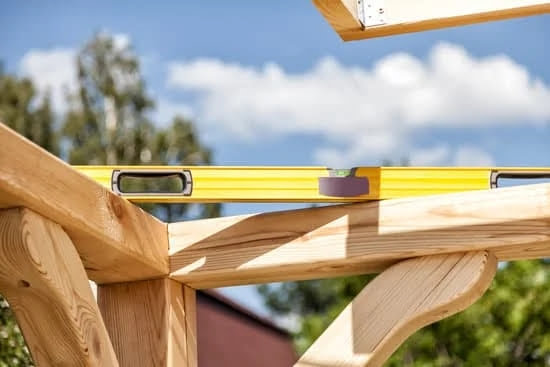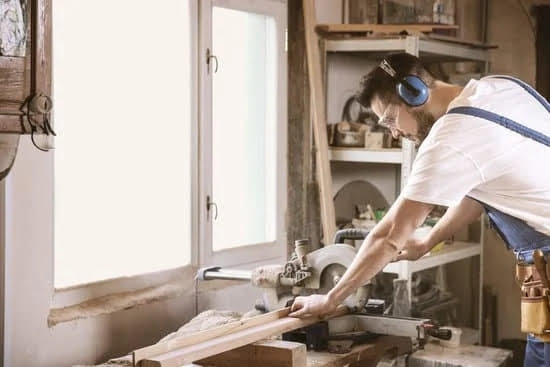Introduction
Setting up a woodworking plane is an essential tool in any woodworker’s arsenal. It can be used to create accurate, smooth, and level surfaces on a variety of different woods, from hardwoods to softwoods and even plywood. With the proper setup and maintenance, a plane can last for many years and can save money that would otherwise have been spent on buying sandpaper or other finishing tools. Properly setting up a plane also ensures it cuts accurately with minimal effort, time, and effort while reducing tear-out.
When setting up a woodworking plane, it is important to make sure that it is adjusted properly according to the type of wood being used as well as the thickness of the material. The depth of cut should also be set depending on how much depth is desired for a particular project. Furthermore, the blade should be sharpened to ensure it cuts cleanly without too much drag occurring. Additional adjustments such as making sure the blade is parallel with the sole of the plane will help reduce tear out and improve overall performance. Finally, it’s important to keep the area around the blade free of debris so that it functions optimally during use.
Taking care to set up your woodwork plane properly before beginning a woodworking project will go a long way towards ensuring professional-looking results with minimal effort and mess. Using high-quality tools when caring for your woodworking plane will help ensure its longevity over time while providing consistent results throughout every usage. Regularly adjusting your woodwork plane at least once per month or less depending on usage will help extend its lifespan and performance level over time as well as make sure you get optimal results each time you use it.
Gather the Necessary Materials
In order to set up a woodwork plane, it is essential to gather the necessary tools and supplies. Choosing the right tools can be critical as there are a few different types of planes out there that serve different purposes. For example, bench planes and block planes aid in flattening surfaces while shoulder planes help create surfaces that taper outward or inward. Therefore, it is important to determine which type of plane will better fit the job at hand.
Once these core components have been identified, one must also consider other supplies like lubricants, sharpening stones and honing guides. Lubricants such as oil or wax can help keep rust at bay and should be applied to all base surfaces, handles, screws and moving parts of a plane before operation. Additionally, sharpening stones are great for keeping blades sharp and ready for use whereas honing guides are designed for straightening edges, easing pressure points or removing small burrs from cutting edges typically found on chisels or spokeshaves.
Prepare the Work Surface
Before you begin setting up your woodwork plane, it is important to first prepare the work surface. A hard and flat surface like a cutting board or a table saw would be ideal in order to ensure that you can make accurate cuts with the plane. If possible, try to position the plane perpendicular to the edges of your workpiece rather than parallel – this will ensure that your blade won’t interfere with or damage any of the other pieces of wood nearby. Be sure to secure your woodwork plane in place with clamps so that it doesn’t shift as you cut. It’s also important to make sure that no one else is near you when using the tool, as it can be dangerous if used incorrectly. Lastly, always keep an eye out for potential kickback from the machine which could cause injury.
Assemble Your Plane
The first step in setting up a woodwork plane is to assemble the components. This will involve placing the blade and handle of the plane together as well as securing them in place with a locking mechanism such as a clamp or screw. Once these are put into place, it is important to double-check that they are properly aligned so that the plane will work correctly.
Next, position the iron”the sharp part of the plane that slices through wood when properly aligned”onto its bed and secure it with a lever cap. Ensure that all sides are even, both depth and width-wise. It is common practice to use a wooden mallet to tap them into place so verify there is good contact between all parts here as well.
Once everything appears to be in order, mounting the blade guard may be necessary for added safety during use. If this is required, line up the blades guard onto its designated grooves, with care taken to ensure again that everything looks square and plumb before tightening with screws or clamps and/or inserting rivets if applicable.
Finally, adjust the tail stock firmly on its end point with set screws; this ensures stable usage during wood working projects . Lastly, it would be wise to apply some light oil onto any moving parts for easy operation of your plane during each use.
Adjusting the Plane Blade
When setting up a woodwork plane, adjusting the blade is essential for achieving precise, clean cuts. The angle of the blade will determine how deep the cut can be and, crucially in relation to precision cutting, the quality of finish. To adjust the angle of your plane blade:
Firstly loosen the cap iron/blade holder screws at the bottom or rear of your plane – taking care to protect you hand from any sharp edges. Next carefully slide out the blade and adjust it to whatever angle you require using a honing guide or a flat stone. When you are happy with its orientation, give it a final polishing with some abrasive paper and then reinsert the blade into its original holder before retightening screws.
It’s important to note that other variables such as chipbreaker position and depth also play an important role in affecting precision cutting. It is recommended that an adjustable chipbreaker should be inserted ahead of the actual cutter (keeping it at least 1mm away with its cutting edge aligned). Additionally make sure that one flat surface faces down towards the baseboard; this ensures uniform tension across the width of your cut. Finally double check that all screws are tight — usually around 1-2Nm applied with a torque driver” for optimum performance during use.
Using the Plane
To get the best results out of your woodwork plane it is important to set it up properly.
First, position the plane’s blade against a flat surface and then adjust its placement until the blade’s edge is perfectly centered. If a depth stop has been installed in your plane, make sure it is properly adjusted to control the depth of cut as you work. Once you have the positioning of your blade set, lock it into place using the appropriate lever or knob located on the plane.
To ensure a smoother cut during each pass, be sure to keep the bottom of your plane well-oiled before use. Applying a light oil will help reduce friction between the blade and wooden surface as you work, making each pass easier and resulting in more precise cuts. Before each new project, be sure to sharpen and hone your Plane’s blades as needed with an appropriate stone. This will give you sharp edges so you can achieve precise cuts with less effort every time.
When working with tight corners or more delicate shaping projects, try slowing down while pushing your Plane forward. This careful approach will create cleaner lines while allowing precision in tight spaces that are difficult to reach without sacrificing quality elsewhere in your finished piece. As long as both pieces involved remain relatively stationary during any push of pull motion ” such as when using a chisel for removing excess wood ” a slower pace ensures accuracy and decreases potential for error or blunders that may require sanding or other corrections later on.
Maintaining a Woodwork Plane
To ensure your woodwork plane is in the best condition for use, regular proactive maintenance is key. Depending on the type of plane you have, the routine maintenance steps may differ slightly but generally include:
1. Cleaning – Remove any excess sawdust or debris from the plane body and blade with a wire brush. Ensure to focus particularly on the mouth of the plane, using a small brush to clean in hard-to-reach areas.
2. Lubrication – If appropriate, add a light coating of mild machine oil to all metal parts such as its hinge joint, bed, along with other areas where friction develops. Doing so will ensure these components stay well lubricated and rust-free.
3. Calibration – To make sure your plane works properly and produces accurate results, regularly check and adjust its settings according to the capacitor size of the wood you’ll be using it on (e.g., thicker woods require larger capacitors). Testing out cuts on spare pieces of wood is useful for this step ” if it’s leaving too many ridges or chute marks, then further adjustment may be required.
4. Sharpening – Depending on how often you use your plane and what kind of tasks it’s being employed for, sharpening knife blades filled with silicone carbide needs to happen every 4-8 weeks (or potentially longer). Use an oilstone for general sharpening and keep your hands steady and consistent strokes during this process ” an effectively sharper edge will be ready soon! Once finished wiping down any remaining particles from the blades with a soft cloth will be essential beforehand storage away neatly once more.
Conclusion
Setting up a woodwork plane is an important process for ensuring precise and accurate cuts. Before you begin, ensure you have all the necessary tools; collect your plane body, iron, cap iron, screws, hammer and screwdriver. Begin by dissembling the two parts of the plane and sharpening the iron blade. Reassemble the plane putting together the two pieces and affixing the iron to the plane using screws. Check that all components are tightly secured before testing out your plane on a scrap piece of wood or material. Adjust as needed to make sure it gives you a clean cut with no rough edges. Finally safety-check by making sure any moving parts move freely and that there are no sharp corners on the body of the plane before storing your equipment for future use. Once completed you can use your woodwork plane to make accurate and precise cuts for whatever project you are working on!

Hi everyone! I’m a woodworker and blogger, and this is my woodworking blog. In my blog, I share tips and tricks for woodworkers of all skill levels, as well as project ideas that you can try yourself.





